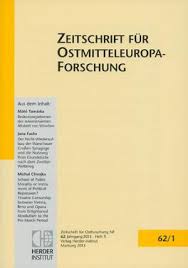Local Identities in Ukrainian Polesia and Their Transformation under the (Post-)Soviet Nuclear Economy
Local Identities in Ukrainian Polesia and Their Transformation under the (Post-)Soviet Nuclear Economy
Author(s): Svetlana BoltovskaSubject(s): Energy and Environmental Studies, Economic history, Social history, Labor relations, Post-War period (1950 - 1989), Transformation Period (1990 - 2010), Inter-Ethnic Relations, Socio-Economic Research, Identity of Collectives
Published by: Verlag Herder-Institut
Keywords: identities; transformation; nuclear power plant; labor migration; language politics; Polesia; Chernobyl;
Summary/Abstract: The essay deals with the transformation of local identities between 1965 and 2015 in three regions in rural Ukrainian Polesia where the USSR built nuclear power plants, each with its own satellite city. These included the Chernobyl NPP and the city of Pripyat (1970-1986) in Kyiiv Polesia, the Rivne NPP and the city of Kuznetsovsk (since 1973)/Varash (since 2016) in West or Great Polesia, and the Khmelnitskiy NPP and the city of Netishyn (since 1980) in so-called Little Polesia. The essay is based on data from field work carried out in these regions from 2016 to 2018, which primarily involved interviewing eyewitnesses and experts and doing research in local museums, archives and libraries within the Chernobyl Exclusion Zone and in Kyiv, Varash and Netishyn. The author analyzes the local identities in these three regions during the early stages of nuclear industrialization and their transformation during the nuclear modernization. She also looks at the formation of new urban identities in the monoindustrial cities, which were situated in rural areas, and at the construction of new self-images and images of others among the new urban and old rural local populations. The common history of these three regions came to an end with the Chernobyl catastrophe. The author examines the impact of the catastrophe, the trauma of the following involuntary resettlement and how it affected local identities in Polesia after 1986. The essay also deals with the impact of the Ukrainian post-Chemobyl antinuclear movement, the following moratorium on the construction of new nuclear power plants, the collapse of the Soviet Union, and the role of Ukrainian independence in the transformation of urban identities in Kuznetsovsk/Varash and Netishyn, where the nuclear power stations are still in operation. Lastly, the author investigates how new identityforming factors as Ukrainization, decommunization, and social inequality, have played an important role in post-Soviet identity building.
Journal: Zeitschrift für Ostmitteleuropa-Forschung
- Issue Year: 68/2019
- Issue No: 3
- Page Range: 445-475
- Page Count: 32
- Language: English

